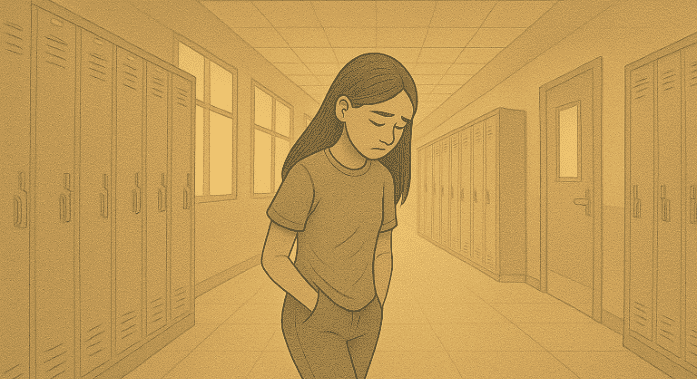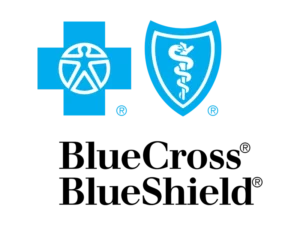Key Takeaways
- Adolescent depression goes beyond mood swings, affecting emotions, thoughts, motivation, sleep, and overall development.
- Teen depression can alter brain structure, impair emotional regulation, and increase long-term mental health risks.
- Depression harms academics and social growth, causing lower grades, school avoidance, and difficulty forming healthy relationships.
- Early, comprehensive treatment with therapy, family support, and environmental changes reduces long-term risks and prevents recurrence.
- Mission Prep offers specialized care for ages 12–17 with evidence-based therapies, family involvement, academic support, and home-like licensed settings to build lasting resilience.
Depression in Teens: More Than Just Mood Swings
Teenage moodiness and depression are not the same. Mood swings are a normal part of adolescence, but depression is a lasting shift in thoughts, emotions, and behavior that disrupts daily life. It shapes how teens see themselves and their future, draining motivation, altering sleep, and erasing joy. Unlike temporary sadness, depression embeds itself in identity during a critical stage of development.
Adolescent depression rates have risen nearly 60% since 2007, and about 70% of teens who experience one major depressive episode will face another within five years. They represent vulnerable years when young minds and identities are being formed under the weight of mental illness.
How Teen Depression Differs from Adult Depression
Teenagers often show depression through irritability, anger, or risk-taking behaviors rather than persistent sadness. They may complain of headaches, stomach issues, or display slipping grades, symptoms that are frequently misread as laziness or rebellion. Unlike adults, teens lack fully developed coping mechanisms, making them more vulnerable to depression’s long-term effects on brain development and identity formation.
Research shows that teen depression significantly impacts peer, family, school, and physical functioning, highlighting the broad effects beyond clinical symptoms.
Common Signs Adults Often Miss
Parents and teachers may overlook depression when it appears as social withdrawal, academic decline, or excessive screen time. Sometimes, high-achieving teens mask depression with perfectionism, pushing themselves to exhaustion. Boys may externalize depression through aggression or substance use, while high-functioning adolescents often hide deep struggles until a crisis hits.
Why It Demands Urgent Attention
Adolescent depression is dangerous because of its immediate risks, suicide is the second leading cause of death among ages 10–24, and because it can rewire the developing brain. Research links depression with reduced hippocampal and prefrontal cortex volume, affecting memory, planning, and impulse control well into adulthood. Early recognition and intervention are critical to protect both present well-being and future potential.
| Mission Prep Healthcare: Adolescent Mental Health Care Mission Prep Healthcare specializes in mental health treatment for teens aged 12-17, offering residential and outpatient programs for anxiety, depression, trauma, and mood disorders. Our therapies include CBT, DBT, EMDR, and TMS, tailored to each adolescent’s needs. With a structured, supportive environment, we integrate academic support and family involvement to promote lasting recovery. Our goal is to help teens build resilience and regain confidence in their future. Start your recovery journey with Mission Prep Healthcare today! |

Persistent sadness, irritability, and withdrawal can signal more than typical teen mood swings.
Critical Brain Changes During Teen Years
Adolescence, second only to early childhood for brain development, shapes memory, reasoning, and emotional control. Depression during this stage causes distress but can also produce lasting changes in brain structure and function.
The Developing Adolescent Brain
The limbic system (emotion and reward) matures earlier than the prefrontal cortex (planning and impulse control), creating a natural imbalance that explains much of teen behavior. When depression occurs, it interferes with the wiring of these systems, altering networks essential for learning, memory, and regulation. Neuroimaging shows reduced hippocampal and prefrontal cortex volume in depressed teens, changes that may persist long after symptoms ease.
Emotional Regulation Under Construction
Connections between the prefrontal cortex and amygdala, crucial for managing emotions, are still maturing in adolescence. Depression disrupts this process, heightening sensitivity to negative experiences and weakening regulatory control. If untreated, these altered patterns can hardwire emotional regulation difficulties into adulthood.
How Depression Disrupts Brain Growth
Depression increases stress hormones like cortisol, damages brain regions such as the hippocampus, and blocks growth factors needed for neural development. It also triggers inflammation, reducing the brain’s ability to adapt and form new connections. The earlier depression emerges, the greater its potential impact, since it collides with the brain’s most intensive growth phases.
Academic Performance Takes a Hit
Depression creates a storm of cognitive challenges that directly undermines academic success. It weakens concentration, working memory, processing speed, and motivation, making lectures hard to follow, studying less effective, and academic engagement exhausting.
Academic Consequences
Research links depression to lower grades, absenteeism, and higher dropout rates. Even after accounting for prior achievement, depressed teens earn lower grades, showing depression itself drives academic decline.
The Attendance Cycle
School avoidance is common, with physical complaints and anxiety making attendance overwhelming. Missed classes create knowledge gaps, fueling more stress and deepening depression, sometimes leading to extended school refusal.
Learning and Memory Impairments
Depression disrupts working memory, planning, and organization, making assignments and exams difficult. It also interferes with memory consolidation, as students may study for hours yet retain little, partly due to disrupted sleep and altered hippocampal function.
Reduced Graduation and Career Outcomes
Adolescents with depression are more likely to drop out of high school and less likely to complete college. Long-term, this translates to fewer career opportunities, lower earnings, and reduced professional confidence, effects that can persist into adulthood.
Social Development and Relationship Damage
Adolescence is vital for social growth, but depression disrupts this process, causing withdrawal just when engagement matters most. Missed experiences can hinder the development of essential interpersonal skills for adult relationships.
Lasting Social Effects
Even after symptoms fade, research shows adolescents with depression often struggle with smaller social networks, higher conflict, and lower relationship satisfaction well into adulthood. Social media can worsen these struggles, fueling comparison and replacing deeper, in-person connections with shallow digital ones.
Isolation and Withdrawal
Withdrawal often starts subtly, skipping outings, disengaging in conversations, or avoiding activities. Depression distorts social perception, making teens see rejection where none exists, which can push peers away and reinforce isolation. Each missed opportunity isn’t just temporary loneliness but a lost chance to practice conflict resolution, intimacy, and boundary-setting.
Challenges in Forming Relationships
Negative self-perception can make depressed teens feel unworthy of authentic relationships, leading to superficial or reassurance-seeking that may carry into adulthood. Early depression, especially during first romantic experiences, can shape unhealthy patterns that persist for years.
Impact on Family Dynamics
Depression affects the whole family. Parents may mistake symptoms for laziness or rebellion, responding with criticism or overaccommodation, both of which can worsen the issue. Siblings, meanwhile, may take on added responsibilities or feel neglected. These shifts can leave lasting marks on family functioning even after recovery.
Risky Behaviors and Dangerous Patterns
Depression increases teens’ risk-taking, often as an unhealthy coping mechanism for emotional pain. Disrupting impulse control and future thinking, it creates a cycle where risky behaviors and depression continually reinforce each other.
Substance Use
Many depressed teens turn to drugs or alcohol to self-medicate. But adolescence is a high-risk period for addiction, as the brain’s reward systems are still developing. Research shows that depressed teens are more likely to develop substance use disorders, with long-term effects on brain function and overall development.
Eating Disorders and Self-Harm
Depression increases the risk of eating disorders and self-harm, both of which are used to manage overwhelming emotions. Restrictive eating or bingeing can create a false sense of control, while self-harm may provide temporary relief from emotional distress. These patterns can persist into adulthood and significantly raise medical and suicide risks if untreated.
Sexual Risk-Taking
Low self-worth and poor impulse control can lead depressed teens into unprotected sex, unhealthy relationships, or risky encounters. Studies show they initiate sex earlier and engage in riskier behaviors than peers, with long-term impacts on relationship patterns, expectations, and emotional well-being.
Juvenile Justice Involvement
Depression can manifest as aggression or substance-related offenses, doubling the risk of justice system involvement. Such involvement interrupts education, severs support systems, and exposes teens to further trauma, often deepening depression and limiting future opportunities.
Physical Health Consequences
Depression isn’t only psychological—it produces measurable physical effects that can shape adolescent development. By activating stress responses, triggering inflammation, and disrupting hormones, depression can alter growth and health in ways that may last into adulthood.
Sleep Disruption
Sleep problems are among the most common effects, ranging from insomnia to hypersomnia. Since adolescence is a key period for brain development, poor sleep undermines memory, emotional regulation, and stress resilience. These disruptions can worsen depression while also establishing unhealthy long-term sleep patterns.
Appetite and Weight Changes
Depression often alters appetite, leading to weight loss, overeating, or weight gain. Because adolescence demands high nutrition for growth, these changes risk deficiencies that affect physical health and cognitive function. Weight changes also impact body image, potentially fueling negative self-perception and vulnerability to eating disorders later in life.
Impact on Growth
Chronic stress raises cortisol levels, which can suppress growth hormones, while poor sleep further limits their release. Reduced appetite or poor nutrition may also compromise growth. Depression during early puberty poses particular risks, as it collides with peak developmental milestones.
Long-Term Mental Health
Adolescent depression heightens long-term mental health risks, with teens about three times more likely to develop adult depression. This reflects lasting psychological and neurobiological vulnerabilities beyond family or environmental factors.
Increased Risk for Adult Depression
Adolescent depression often follows patterns of continuity (symptoms persisting into adulthood) or recurrence (recovery followed by later episodes). About 70% of adolescents with major depression experience another episode within five years, especially when depression begins in early adolescence during key brain development stages. Severity, treatment adequacy, and timing all play roles—early, effective intervention can reduce long-term risks.
Development of Other Mental Health Conditions
Depression in adolescence also heightens risk for multiple disorders beyond depression itself. Affected teens face a higher risk of anxiety, a higher risk of substance use disorders, and a significantly greater risk of eating disorders. These outcomes reflect how depression reshapes stress regulation, coping, and brain systems, creating broad vulnerability across mental health conditions.
Suicidal Thoughts and Behaviors
Perhaps most concerning is the link to suicide. Over half of adolescents who die by suicide have a diagnosable depressive disorder. This increased risk continues into adulthood, fueled by both neurobiological changes in impulse and stress regulation and psychological patterns like hopelessness and self-blame. Such persistent vulnerability highlights the need for comprehensive, long-term treatment approaches.
Breaking the Cycle: Effective Interventions
Adolescent depression, though serious, is highly treatable. Early, comprehensive care, combining therapy, medication when needed, family support, and environmental changes, can ease suffering and protect teens from long-term developmental risks.

Supportive communication and family therapy can improve recovery outcomes and long-term resilience.
Early Detection
Identifying depression early is critical, as shorter illness duration leads to better outcomes and lower recurrence risk. Yet about 60% of adolescents with depression remain undiagnosed, often due to stigma, misattributed symptoms, or concealment. Solutions include increased awareness among parents and teachers, routine screening in schools and clinics, and peer-education programs that help teens recognize symptoms in themselves and others.
Evidence-Based Treatment
Cognitive-behavioral therapy (CBT) and interpersonal therapy (IPT) are strongly supported approaches that help teens reframe negative thought patterns and improve relationships. For moderate to severe cases, selective serotonin reuptake inhibitors (SSRIs) may be recommended, typically alongside therapy for stronger, lasting results.
Family Support
Family involvement improves recovery by reducing conflict, increasing communication, and supporting autonomy. Parents can further help by validating feelings, encouraging social connection, modeling healthy coping, and maintaining realistic expectations. These practices strengthen recovery and help sustain improvements after formal treatment ends.
School-Based Programs
Because teens spend much of their lives in school, educational settings play a vital role in both detection and care. Effective programs include universal screening, mental health education, and accessible school counseling. Well-designed initiatives reduce depression symptoms and improve academic outcomes and school climate.
Building Resilience: Protective Factors
Beyond treatment, building resilience is key to lasting protection. Resilience, the ability to recover despite adversity, can be developed through skills, practices, and support, reducing future vulnerability while promoting healthier overall development.
Support Networks
Strong relationships with peers and adults provide emotional backing, reduce isolation, and create buffers against relapse. For teens, staying connected to supportive networks significantly improves outcomes, even when risk factors remain.
Healthy Coping Skills
Developing coping strategies, such as emotional regulation, problem-solving, and distress tolerance, helps adolescents manage stress without turning to harmful behaviors. Mindfulness and self-compassion are especially powerful, reducing rumination and harsh self-criticism while improving emotional balance. Parents and educators can nurture these skills by modeling them and reinforcing effective coping efforts.
Mind-Body Approaches
Physical activity consistently shows antidepressant effects, improving mood, sleep, and brain health while building confidence. Nutrition also plays a role, with diets that reduce inflammation and support neurotransmitter function helping both treatment and prevention. Together, these mind-body strategies strengthen resilience and support long-term mental well-being.
Supporting Teens Through Mission Prep
At Mission Prep, we provide specialized mental health care exclusively for adolescents aged 12–17 through residential, outpatient, and virtual programs designed to support both emotional and developmental needs. We believe in treating the whole family system, giving teens a “vote and voice” in their treatment.

With evidence-based treatment, most adolescents can significantly improve and build skills for lasting mental health.
We help teens process a wide range of challenges, including anxiety, depression, trauma, mood and thought disorders, academic or social difficulties, and technology dependence. Our team uses a blend of evidence-based and holistic therapies, including CBT, EMDR, TMS, individual and group therapy, and structured family sessions to provide comprehensive support.
Family involvement is at the heart of what we do. We offer weekly family therapy, regular communication, and resources to strengthen the entire household. We also provide integrated academic support, ensuring teens can keep up with school while receiving care. Our licensed, home-like settings feature small group ratios, semi-private rooms, shared meals, and a calm, nurturing environment.
Our team consists of master’s- and doctorate-level clinicians, supported by on-site doctors and psychiatrists. We focus on building long-term skills and coping strategies, helping teens not just through immediate challenges but for life. With locations in California and Virginia, we provide accessible care in safe, supportive environments specific to adolescent development.
Frequently Asked Questions (FAQs)
How can I tell if my teenager is depressed or just going through normal mood swings?
Normal moodiness is short-lived and situation-based. Depression lasts two weeks or longer, with persistent sadness, sleep or appetite changes, withdrawal, and declining functioning. Major changes from your teen’s usual patterns warrant professional evaluation.
Can untreated depression in adolescence cause permanent brain damage?
While “permanent damage” isn’t accurate, untreated depression can alter brain development, especially in memory and decision-making regions. Early, effective treatment can reverse many changes, protecting brain health during adolescence when neuroplasticity offers strong potential for recovery.
What should I do if my teen refuses to get help for their depression?
Listen without judgment, validate feelings, and present depression as a medical condition. Offer treatment choices to support autonomy. If resistance persists, start with primary care, school counseling, or digital resources; seek urgent help if safety risks emerge.
Are certain teenagers more at risk for depression than others?
Yes. Higher risk factors include family history, trauma, chronic illness, sensitive temperament, perfectionism, or LGBTQ+ identity. After puberty, girls are twice as likely to develop depression, though social and diagnostic differences may contribute.
Can my child recover completely from adolescent depression?
Yes. With early, evidence-based treatment, 60–80% of teens improve significantly, often achieving full recovery. Programs like Mission Prep support lasting mental well-being by combining therapy, family involvement, and resilience-building strategies to reduce relapse risk.















